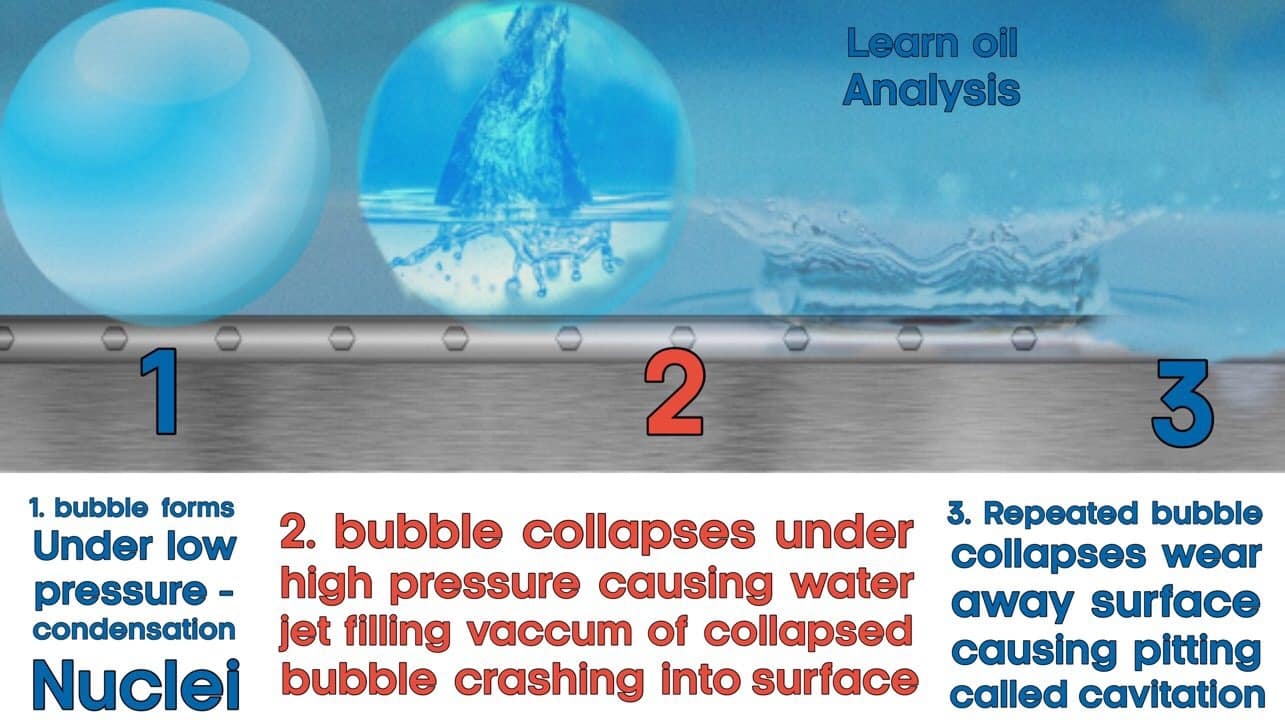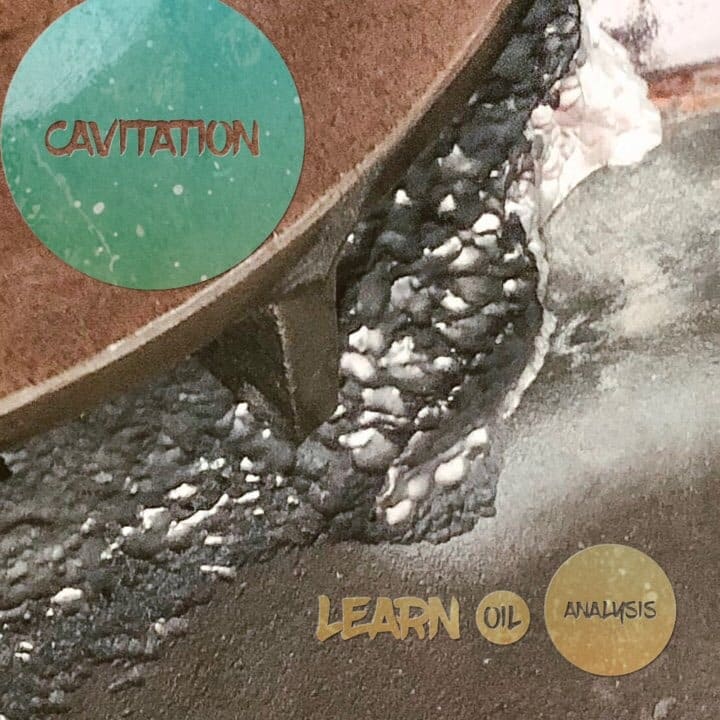This article will answer the following questions:
-
Why is my hydraulic oil or fuel turning black?
-
Why are air handling properties of an oil important for good lubricant health.
-
Is my hydraulic pump cavitating?
-
I have recently switched oil types and now my oil has turned black – why is this?
How does air cause my oil or fuel to turn black?
Air entrainment can be a major issue in your lube oil. Not only is air a poor lubricant so can lead to increased wear, it can also lead to your oil turning black when air bubbles collapse. This collapsing cause temperatures over 1000’C and result in carbon deposits as the surrounding liquid is burnt.
So how can this happen? It all comes down to a process called adiabatic compression. Most of you will be familiar with the process of how a diesel engine works in which during the compression stroke the combination of the sprayed fuel and the increasing temperature of the surrounding compressed air leads to ignition. The burnt fuel is never truly converted fully to carbon dioxide and water and some of the intermediate process of combustion, namely soot, is left behind, which causes your oil to turn black. Now in a diesel engine this is perfectly normal and your lubricants are designed to handle reasonably high amounts of soot before they need changing.
In a hydraulic system or indeed in a high pressure fuel line, air entrainment can cause a similar process to occur. Rather than a fuel being burnt in surrounding air, the small air bubbles in the fluid when collapsing under the high pressures of the system form a micro temperature around the bubble of over 1000’C leading to the immediate fuel or lube oil being burnt to form a tiny soot particle. Lots of bubbles and over prolonged time can lead to a build up of soot within the system. This tiny bubble scale diesel combustion process that occurs is why the problem is often referred to as “microdieseling”.
Rather than focussing on lubricants with detergent and dispersant additives to handle the soot formed the best solution is to tackle the problem head on of why is the system getting air into it. This can be cavitation of a pump for instance or it could be mixing of incompatible oils or other contaminants which can increase the tendency of the fluid to foam or trap air.
With cavitation of a pump the air bubbles when they reach a high pressure zone will collapse suddenly. This not only leads to carbon formation, but also wear. Wear is formed because when the bubble starts collapsing a liquid jet fills the void left by the collapsing bubble and hits the metal surface. A single impact removes such a negligible amount of metallic material it is not worth talking about, but the problem is the bubbles keep attacking the exact same point each time. This is because air bubbles don’t form in random locations and need microscopic imperfections or dirt (called condensation nuclei) to form upon. You see these every day if you leave a glass of crystal clear still water overnight it will form bubbles and the interesting thing is they will always occur in the same location each time.
As the bubbles form in the same location each time within the pump or high pressure area of a system such as loaded sites then this repeated impact leads to metal extrusion termed cavitation. This can sometines give a rattling type sound as the bubbles implode. In very thin layers of metal a small pinhole size hole can be made by the extrusion over time, termed pinhole corrosion and this is a very common source of engine coolant leaks – hence the importance of regularly testing your engine coolant as well as your oil.
Causes of caviation
Cavitation has several causes including:
- Turbulence caused by valves opening and closing regularly or a sudden shockwave from immediate cessation of a system.
- Any resistance to suction which can include poorly located filters too.
- Any pressure drops through pipes, hoses and filters.
- Low oil volume leading to drawing of air.
An example schematic of how cavitation occurs and an example pump showing cavitation are shown below.


Causes of increased oil tendency to trap air
The increased tendency to trap air (air release) can on very rare occasions occur due to poor lubricant or fuel quality, but by far the most common cause is through contamination. This can be common contaminants like water or dirt, but also human error causes such as mixing of incompatible oils. The solution to these problems usually rests with good lubricant storage, labelling and handling processes to reduce contamination occuring with prevention being better than the cure.
It is worth noting when trying to reduce contamination that filtration practices should always be chosen in combination with recommendations from both your oil and filter suppliers. Although contaminated oil causes poor air handling properties in the oil, equally over filtering the oil with too regular filter changes can result in loss of lubricant antifoam additive which by design is not fully soluble in the oil or fuel and will hence becomes trapped in the filters. This is generally not a problem as the fluid passes through the filters the additive acts upon it, but when the filter is remove the additives are lost and so are the beneficial properties in being able to handle air mixing with the oil.
Potential problems that can result of air within the fluid system in addition to microdieseling
The problems that can arise in addition to carbon formation include:
- Rising system temperature – All those microtemperatures of 1000’C within the bubbles lead to an overal fluid temperature rise in the whole fluid.
- Degradation of the fluid through thermal failure leading to increased viscosity, sludging and varnish formation. Since the varnish forms in hot areas and deposits in cold areas this can insulate cooling parts and insulate the system from heat loss leading to further temperature rises. This becomes a viscious cycle as more varnish is in term is formed from the increased temperature, which results in further hindersnce of system cooling.


